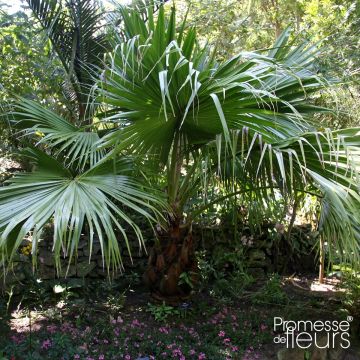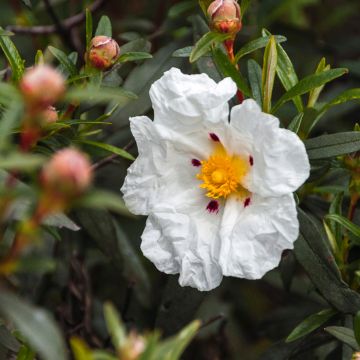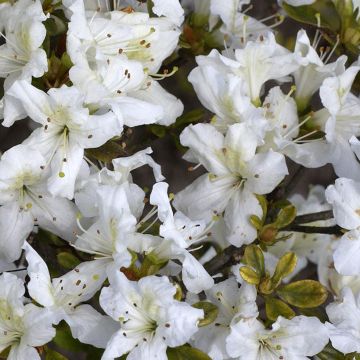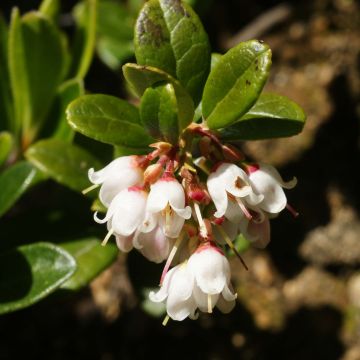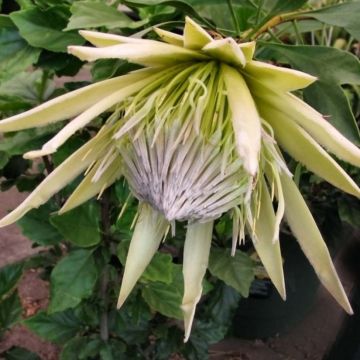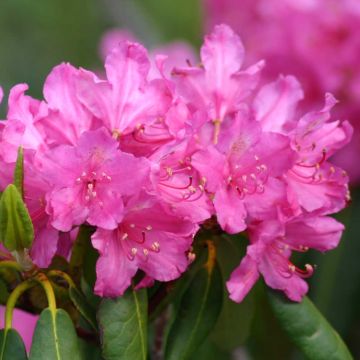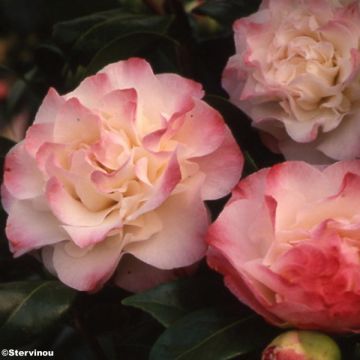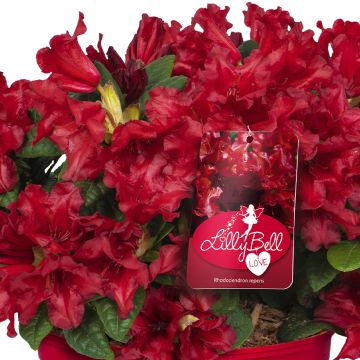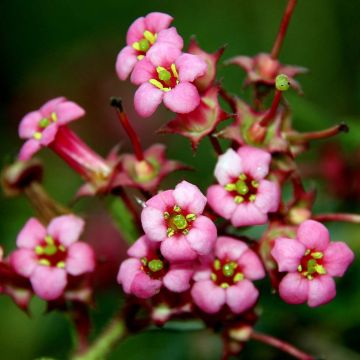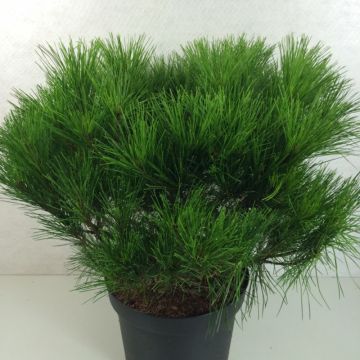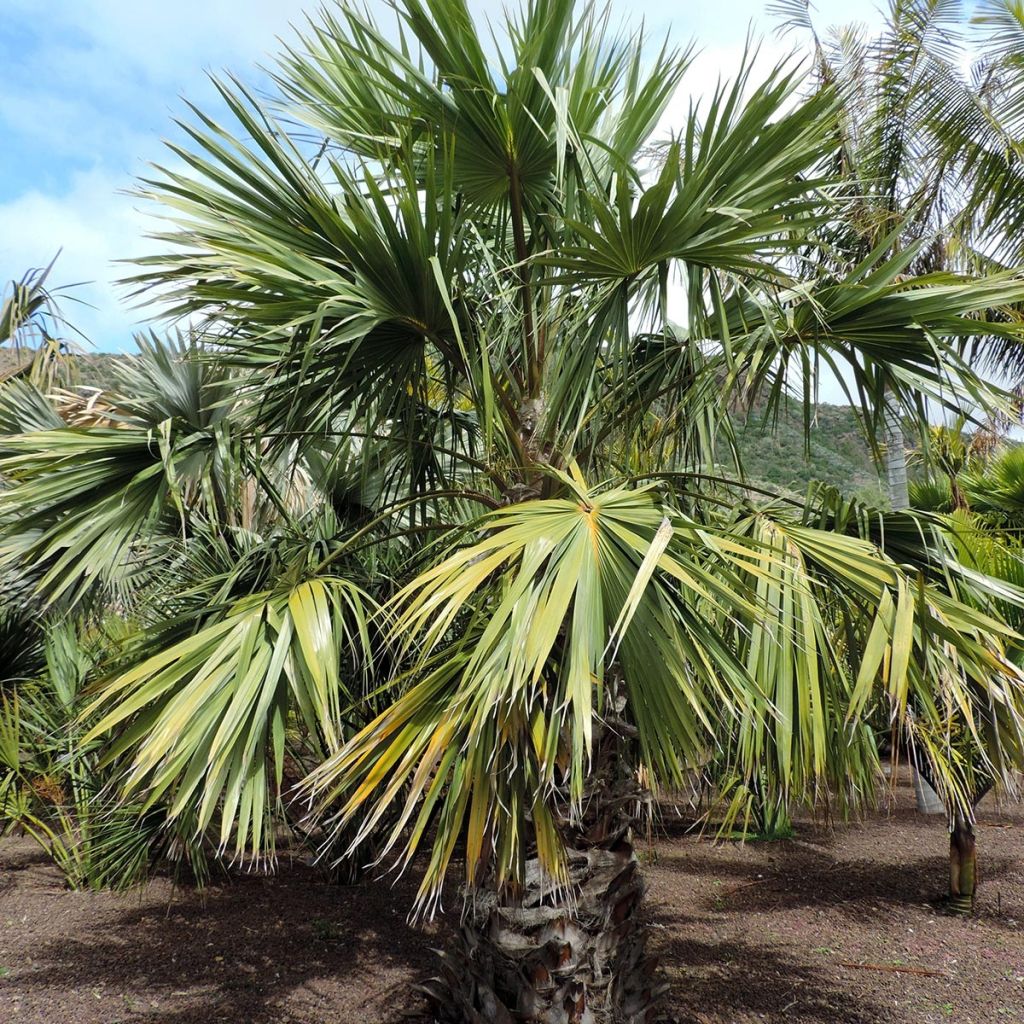

Livistona saribus - Palmier crocodile
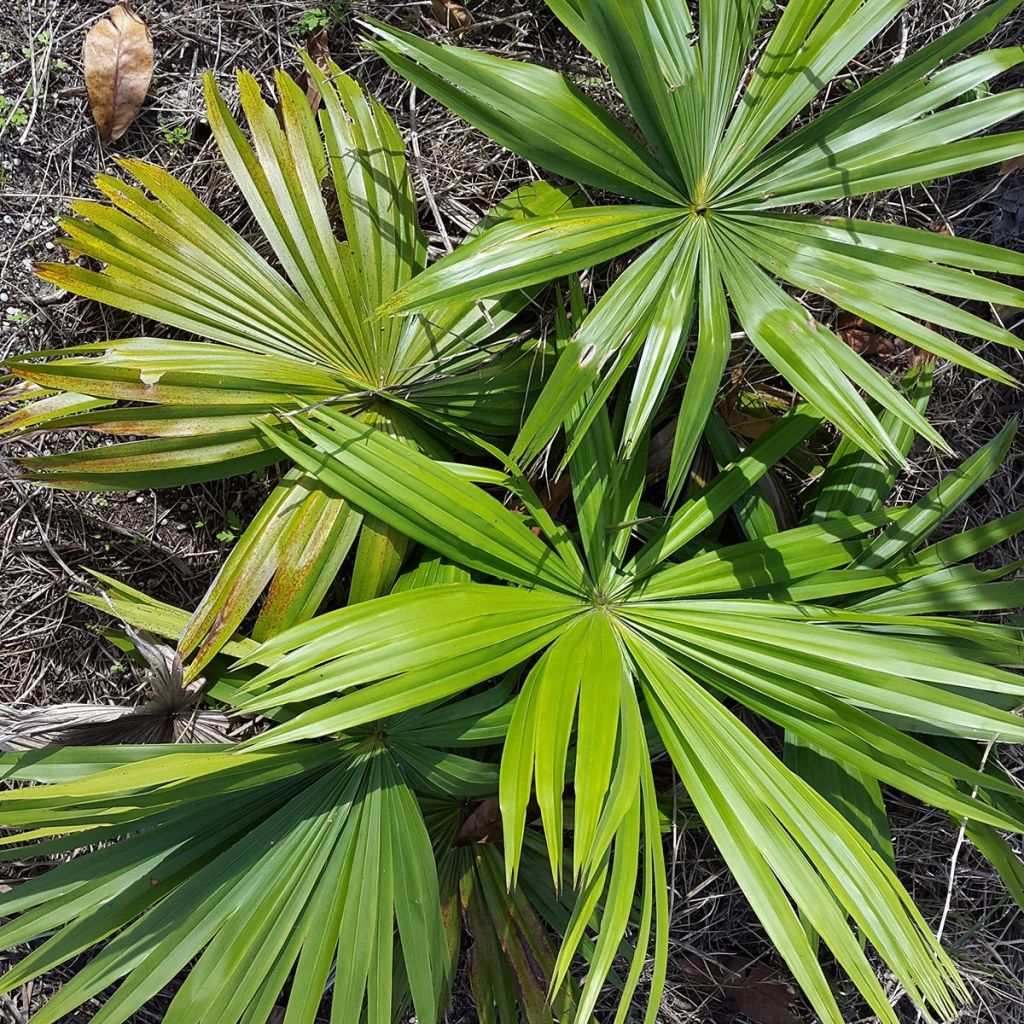

Livistona saribus - Palmier crocodile
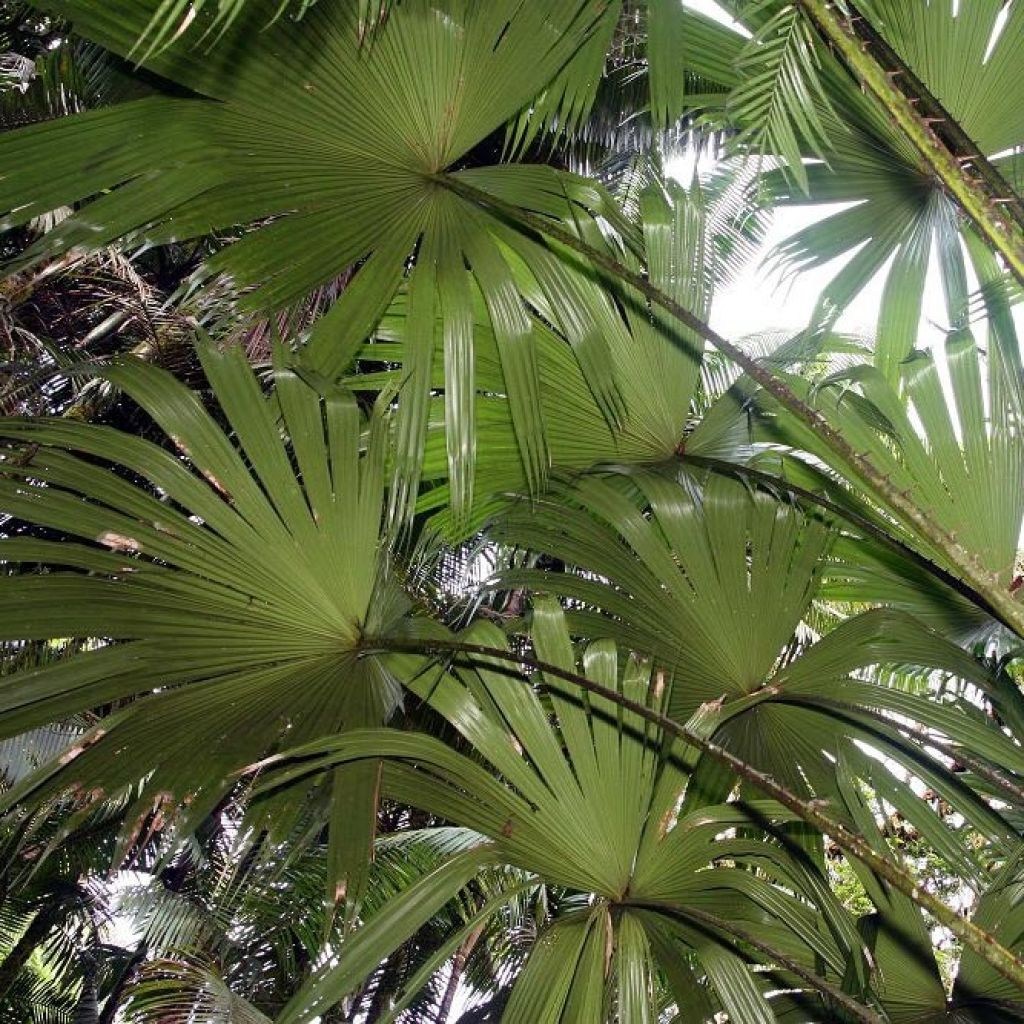

Livistona saribus - Palmier crocodile
Livistona saribus - Taraw Palm
Livistona saribus
Taraw Palm, Saribus Palm
This plant carries a 24 months recovery warranty
More information
We guarantee the quality of our plants for a full growing cycle, and will replace at our expense any plant that fails to recover under normal climatic and planting conditions.
From €5.90 for pickup delivery and €6.90 for home delivery
Express home delivery from €8.90.
Does this plant fit my garden?
Set up your Plantfit profile →
Description
Livistona saribus is sometimes called the Crocodile Palm due to the formidable hooked spines that adorn the petioles of its leaves, attributes that should be approached with caution. It is also one of the most luxuriant species in this genus, which consists of about thirty species native to tropical regions of Australia and Asia. Highly appreciated as an indoor plant or in the most sheltered seaside gardens, it is sought after for its splendid foliage, assembled in a crown of very large fan-shaped leaves with trailing segments. It is a magnificent plant when it can express its full potential in a warm and humid climate. However, it is quite easy to grow in a pot, as long as it has light and a rich and moist growing medium. It will remain modest in size and can spend the winter in a frost-free veranda or greenhouse.
Livistona saribus is native to a vast region of Southeast Asia including Cambodia, Laos, Thailand, Vietnam, the islands of Borneo and Java, the Malay Peninsula, and the Philippines. This species is found in tropical and marshy forests, peatlands, and mangroves in Sumatra, and even in watercourses. This species requires warmth and water to grow well but can tolerate less favourable conditions by reducing its growth and development. Young specimens must be protected from frost during winter, while adults can withstand short frosts of around -5 to -6°C (23 to 21.2 °F). In nature, the plant reaches an average height of 25m (82 ft) with a spread of 10m (32 ft 10 in). In climates mild enough to accommodate it in the ground, it will adapt but will remain smaller, reaching about 10m (32 ft 10 in) in height. If cultivated in a container, it will form a clump of leaves no taller than 2.50m (8 ft 2 in) and with a spread of 1.50m (4 ft 11 in). Like all palms, it belongs to the family Arecaceae.
The Crocodile Palm develops a single trunk covered with raised leaf scars and wide internodes, bearing the remnants of old petioles at its base. At the top of this trunk, a more or less round crown develops, composed of 25 to 30 very large palmate leaves, almost circular, measuring 80cm (31.5 in) to 2m (6 ft 7 in) in length and 1.50m (4 ft 11 in) to 1.70m (5 ft 7 in) in width, deeply divided into slender and pointed segments, united at the base. The tip of each segment is split in two and trailing. The colour of the leaves is dark green and glossy on the upper surface, and slightly paler underneath. Each leaf is carried by a long orange-coloured petiole measuring 1 to 2m (3 ft 4 in to 6 ft 7 in), adorned with long prominent curved spines, ranging from green to brown, measuring 1 to 6cm (0.4 to 2.4 in). The flowering occurs in summer on mature subjects under favourable climatic conditions. It takes the form of unbranched, short panicles of yellow flowers. The fruits are more or less round, measuring about 2.5cm (1 in) in length and 1.8cm (0.7 in) in diameter. They often have two lobes and are blue to violet when ripe.
The Livistona saribus palm can be planted in the ground only in the most sheltered gardens. It deserves a prominent place, either isolated on a lawn or in front of a large shrub ensemble that will protect it from strong winds and intense sunlight. When planted in a large pot or container, it forms a superb green plant that will adorn the terrace or balcony during the summer, and then the temperate veranda or greenhouse in winter. It can sometimes be difficult to combine with other plants due to its strong personality: reserve a corner of a swimming pool for it and, for example, associate it with Fargesia bamboos, Phormiums, sculptural, sober, and colourful plants, Cordylines, and Hakonechloa macra Aureola, an easy-to-grow ground cover with beautiful orange foliage in autumn.
Report an error about the product description
Livistona saribus - Taraw Palm in pictures
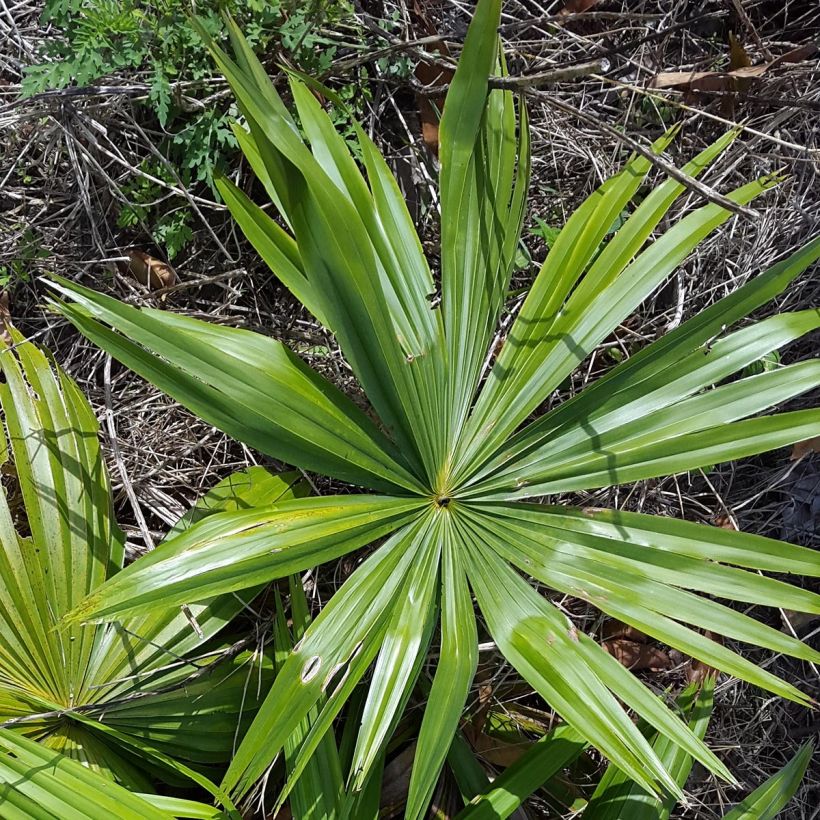

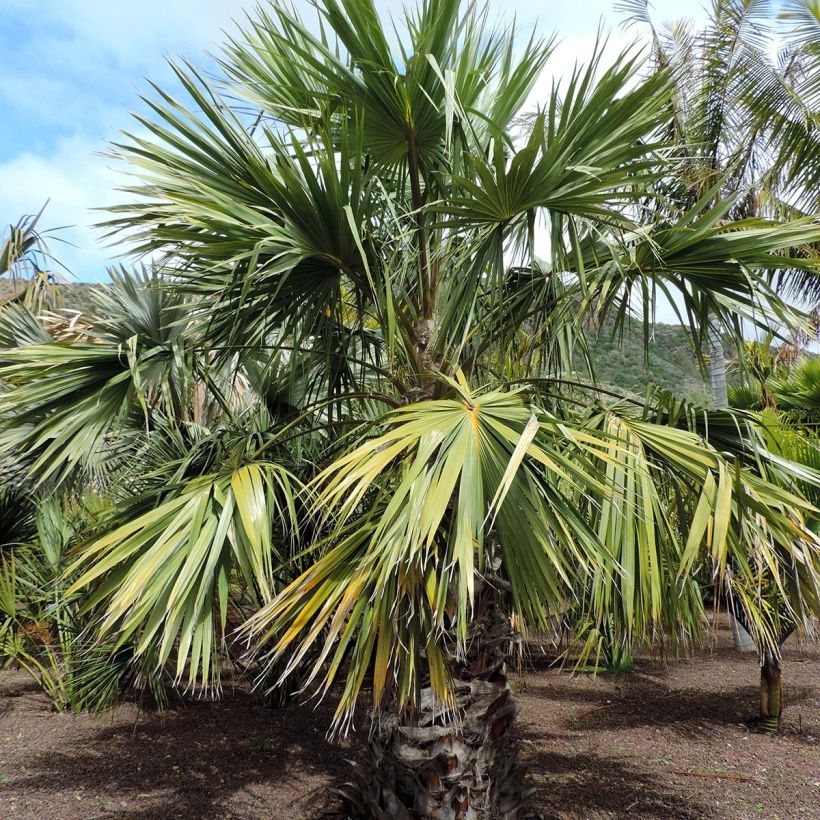

Plant habit
Flowering
Foliage
Botanical data
Livistona
saribus
Arecaceae
Taraw Palm, Saribus Palm
Southeast Asia
Other Livistona
Planting and care
Livistona saribus shows fairly rapid growth, as long as it is regularly watered in a warm climate. It dislikes the cold, especially young specimens that will need to be protected from frost in winter in a veranda or greenhouse. Mature plants can withstand brief freezes of around -5°C (23 °F). Choose a sunny exposure (in the north) or semi-shaded (in the south), sheltered from the wind. It must be grown in a large pot to overwinter, outside the mildest coastal regions. It must be protected in case of expected cold, by tying the crown of leaves tightly enough to protect the heart of the plant. Young specimens appreciate partial shade, older plants tolerate the sun better. This palm is not demanding in terms of soil, as long as it is deep, well prepared, enriched, well loosened, and always slightly moist. Although it likes damp soil, it can still tolerate periods of moderate drought by significantly reducing its development and slowing down its growth. In warm regions, it will need to be watered very regularly and deeply in summer. It requires little maintenance except for pruning the oldest fronds close to the stem.
Pot cultivation:
Choose a very large pot or a container with a perforated bottom, with a capacity of 75 to 100 litres. Prepare a mixture composed of 50% loam, 25% compost, 25% sand. Mix well. Partially fill your container after placing a drainage layer at the bottom (clay balls, gravel, broken terracotta pots...). Place your palm on the mixture, so that the neck (the area where the roots originate) does not exceed the pot but is not buried too deep under the substrate either. Add the rest of the mixture around the root ball, and firmly pack. Water in several stages to saturate the substrate with water and remove air. Place your palm in a very bright location, avoiding excessive sunlight. Outdoors, place it in partial shade, avoiding full sun that could burn its foliage. After two weeks in partial shade, you can gradually expose it to the sun. In winter, it can be placed in an unheated room, in filtered light, in a greenhouse or on a veranda. Occasionally mist the foliage and reduce watering. Apply organic fertilizer or compost in spring.
Diseases and pests:
In some regions, large palm trees are victims of pests such as the dreaded and widespread Paysandra archon moth, which can be found as far as England. Specific treatments are now available as a preventive measure. The red palm weevil (Rhynchophorus ferrugineus) has been present in some areas since 2006. The symptoms are as follows: fronds cut, dried or yellowing. These pests attack numerous species of palm trees, with a fatal outcome: the leaves irreversibly and completely dry up as soon as the heart of the stem harbours larvae.
Planting period
Intended location
Care
This item has not been reviewed yet - be the first to leave a review about it.
Evergreen shrubs
Haven't found what you were looking for?
Hardiness is the lowest winter temperature a plant can endure without suffering serious damage or even dying. However, hardiness is affected by location (a sheltered area, such as a patio), protection (winter cover) and soil type (hardiness is improved by well-drained soil).

Photo Sharing Terms & Conditions
In order to encourage gardeners to interact and share their experiences, Promesse de fleurs offers various media enabling content to be uploaded onto its Site - in particular via the ‘Photo sharing’ module.
The User agrees to refrain from:
- Posting any content that is illegal, prejudicial, insulting, racist, inciteful to hatred, revisionist, contrary to public decency, that infringes on privacy or on the privacy rights of third parties, in particular the publicity rights of persons and goods, intellectual property rights, or the right to privacy.
- Submitting content on behalf of a third party;
- Impersonate the identity of a third party and/or publish any personal information about a third party;
In general, the User undertakes to refrain from any unethical behaviour.
All Content (in particular text, comments, files, images, photos, videos, creative works, etc.), which may be subject to property or intellectual property rights, image or other private rights, shall remain the property of the User, subject to the limited rights granted by the terms of the licence granted by Promesse de fleurs as stated below. Users are at liberty to publish or not to publish such Content on the Site, notably via the ‘Photo Sharing’ facility, and accept that this Content shall be made public and freely accessible, notably on the Internet.
Users further acknowledge, undertake to have ,and guarantee that they hold all necessary rights and permissions to publish such material on the Site, in particular with regard to the legislation in force pertaining to any privacy, property, intellectual property, image, or contractual rights, or rights of any other nature. By publishing such Content on the Site, Users acknowledge accepting full liability as publishers of the Content within the meaning of the law, and grant Promesse de fleurs, free of charge, an inclusive, worldwide licence for the said Content for the entire duration of its publication, including all reproduction, representation, up/downloading, displaying, performing, transmission, and storage rights.
Users also grant permission for their name to be linked to the Content and accept that this link may not always be made available.
By engaging in posting material, Users consent to their Content becoming automatically accessible on the Internet, in particular on other sites and/or blogs and/or web pages of the Promesse de fleurs site, including in particular social pages and the Promesse de fleurs catalogue.
Users may secure the removal of entrusted content free of charge by issuing a simple request via our contact form.
The flowering period indicated on our website applies to countries and regions located in USDA zone 8 (France, the United Kingdom, Ireland, the Netherlands, etc.)
It will vary according to where you live:
- In zones 9 to 10 (Italy, Spain, Greece, etc.), flowering will occur about 2 to 4 weeks earlier.
- In zones 6 to 7 (Germany, Poland, Slovenia, and lower mountainous regions), flowering will be delayed by 2 to 3 weeks.
- In zone 5 (Central Europe, Scandinavia), blooming will be delayed by 3 to 5 weeks.
In temperate climates, pruning of spring-flowering shrubs (forsythia, spireas, etc.) should be done just after flowering.
Pruning of summer-flowering shrubs (Indian Lilac, Perovskia, etc.) can be done in winter or spring.
In cold regions as well as with frost-sensitive plants, avoid pruning too early when severe frosts may still occur.
The planting period indicated on our website applies to countries and regions located in USDA zone 8 (France, United Kingdom, Ireland, Netherlands).
It will vary according to where you live:
- In Mediterranean zones (Marseille, Madrid, Milan, etc.), autumn and winter are the best planting periods.
- In continental zones (Strasbourg, Munich, Vienna, etc.), delay planting by 2 to 3 weeks in spring and bring it forward by 2 to 4 weeks in autumn.
- In mountainous regions (the Alps, Pyrenees, Carpathians, etc.), it is best to plant in late spring (May-June) or late summer (August-September).
The harvesting period indicated on our website applies to countries and regions in USDA zone 8 (France, England, Ireland, the Netherlands).
In colder areas (Scandinavia, Poland, Austria...) fruit and vegetable harvests are likely to be delayed by 3-4 weeks.
In warmer areas (Italy, Spain, Greece, etc.), harvesting will probably take place earlier, depending on weather conditions.
The sowing periods indicated on our website apply to countries and regions within USDA Zone 8 (France, UK, Ireland, Netherlands).
In colder areas (Scandinavia, Poland, Austria...), delay any outdoor sowing by 3-4 weeks, or sow under glass.
In warmer climes (Italy, Spain, Greece, etc.), bring outdoor sowing forward by a few weeks.

































